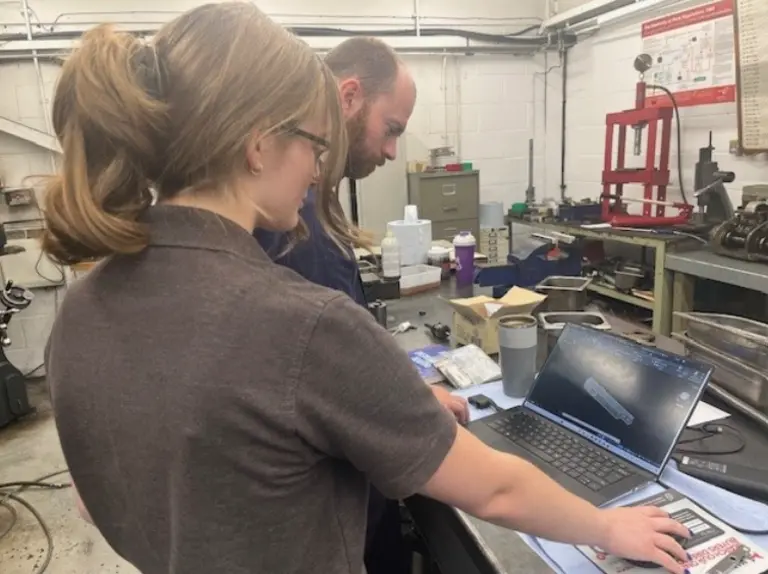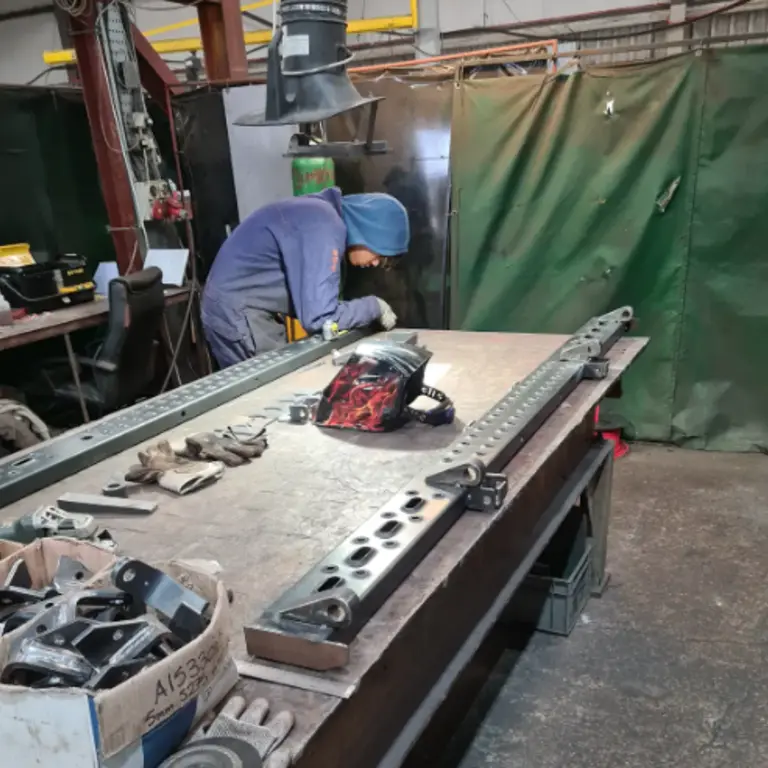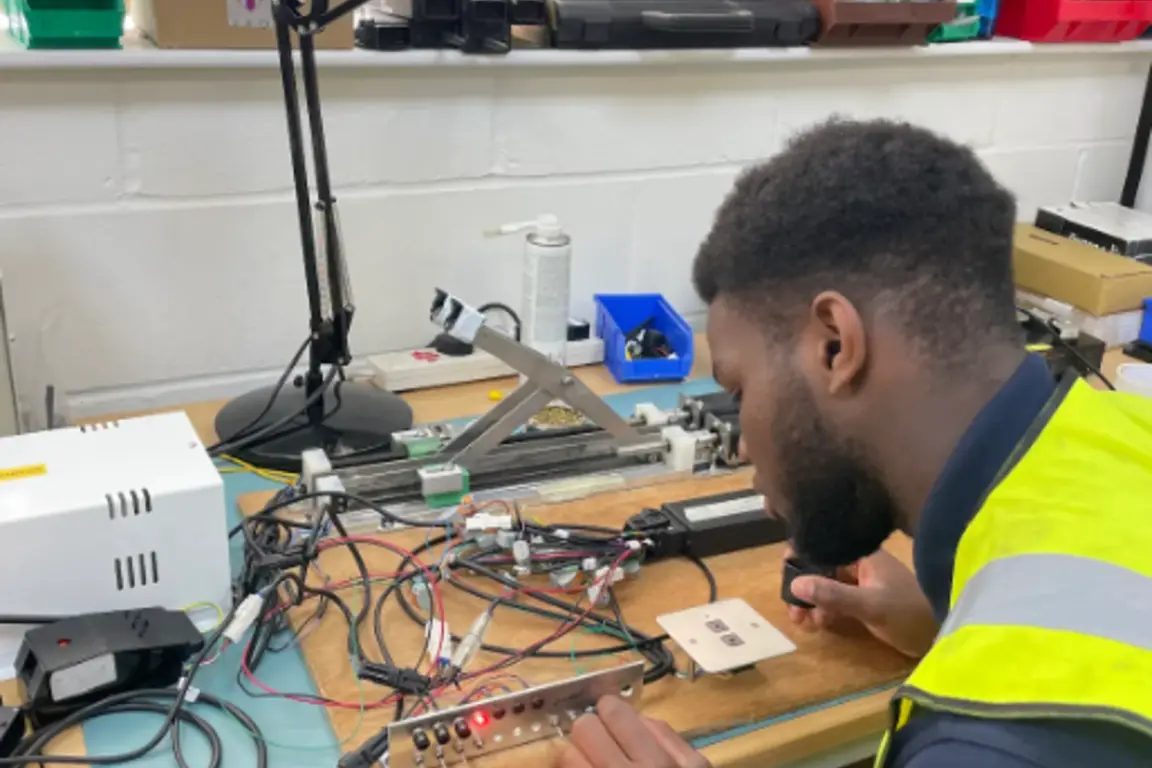30.06.2025
For many manufacturing and engineering firms in England, particularly small-to-medium sized businesses, recruiting young people is an ongoing challenge. From skills gaps to people shortages, it’s no wonder businesses are asking: how can we build a pipeline of talent that’s both motivated and high calibre?
The good news is that there are more high-quality routes than ever to help you find the right people – and develop that pipeline early on.
What are your options for recruiting young people?
Today, young people can enter the world of manufacturing work through a variety of pathways – each offering a blend of practical skills and essential knowledge. Employers commonly look to:
- Apprenticeships, which offer extensive on-the-job learning
- T Levels, a new post-16 technical qualification which allows you to test students – and help shape’ their skills – through a 45-day industry placement, before deciding whether to progress to an apprenticeship or longer-term role
- University degrees, which focus on in-depth academic learning
How do these routes differ from one another?
Each route into the sector offers a different balance of theory and on-the-job experience or training.
Apprenticeships involve employing someone from day one. Apprentices split their time between work and structured training, with at least 20% of their time spent in classroom learning. This route requires a much longer-term commitment from the outset.
T Levels, by contrast, are a more flexible way to engage young people early in their career. As part of a two-year technical qualification, students complete a 45-day industry placement. This allows employers to bring in fresh talent, assess students’ abilities in real-world settings, and help shape their future skills – without needing to commit to a full hire. They also allow young people the chance to understand the workplace, develop their technical skills and identify manufacturing roles they might want to pursue in the future.
University degrees offer a broader, more theoretical education with a focus on research and academic rigor – and no hands-on experience.
Of these, T Levels are an increasingly attractive option for manufacturing businesses looking to bring in fresh, skilled talent. If you’re still getting to grips with how they work or what they could offer your business, you’re in the right place. Here’s what you need to know about the benefits of hosting a placement.
What are the benefits of offering a T Level industry placement?
As part of their course, every T Level student must complete a 45-day industry placement.
This gives businesses the opportunity to:
- Test out student capabilities in real-life situations
- Introduce them to your team, tools and processes
- Shape their learning around your business needs
- Inspire the next generation to pursue a career in your field
There are additional benefits for your wider team too – from offering team members management and mentorship opportunities, as they share their experience with T Level students, to boosting productivity as students get to work on real tasks from day one.
Francis Wilkinson at Quantamatic, a small manufacturing firm based in Leicestershire, says it best:
“With a bit of time invested up-front, you’ll reap the rewards soon afterwards. Make sure you understand the T Level student’s interest and their technical specialism and if you can match that to the needs of your business, you’ll be winning.”
Their T Level student Amber (pictured below) didn’t just support the team – she helped redesign CAD drawings that are now being used across the business. “She completely exceeded our expectations and left a legacy on the business that goes well beyond her placement.”

How do you make sure you find the right student?
T Level placements are flexible and planned around the host business. You should work with the college or school to design the placement, request specific skills, and even run an interview process.
Here’s how it can work:
- Go to employers.tlevels.gov.uk and enter your postcode to find local T Level providers.
- Work with the college or school to define what you're looking for in a T Level student.
- Explore what students are learning and plan the placement to align with your business needs.
- Run a recruitment process, such as interviews or “speed dating” events (many providers arrange these).
- Offer taster activities, if you want to test the waters first.
- Learn about the H&S course content, and work with the college or school to identify suitable business and common tasks for the students.
- Take on your student and see how they perform in a real-world setting.
Andy Heffer-Lamond at HF Bond, a metal solutions company in Suffolk, says: “As this was our first T Level placement, we didn’t have any processes in place, but I was really impressed by how easy and smooth the set-up was. The college supported with all the relevant paperwork.”
His student, Malaki (pictured below), is now trained in CAD, laser machines and welding – and could be a great candidate for a future role.

How can T Levels support long-term recruitment?
For many manufacturing firms, a T Level placement marks the start of a longer-term relationship – not only with potential future employees, but also with their local colleges and schools. It helps them to raise their local profile and attract students with the right mindset.
At Glazing Vision in Norfolk, three T Level students have already completed placements, each leaving a positive mark.
“Because the placement runs across 45 days, there’s enough time to give meaningful work for the student to get stuck into – and get something out of,” says MD Jon Shooter. “We’ve hosted three T Level students now and found them all to have the right attitude and capability.”
Where should you start?
If you're looking to find fresh young talent – without committing to a full-time hire just yet – T Level industry placements are a powerful solution.
Speak to your local school or college, define the skills you need, and get involved. Whether you’re seeking someone to support your CAD team or someone curious to learn the ropes on the shop floor, there’s likely a T Level student nearby ready to get stuck in.
“Speak to your local college or provider and take on a T Level student,” says Andy at HF Bond. “They’re going to be a great talent pipeline for the future.”
Start your search at employers.tlevels.gov.uk.
